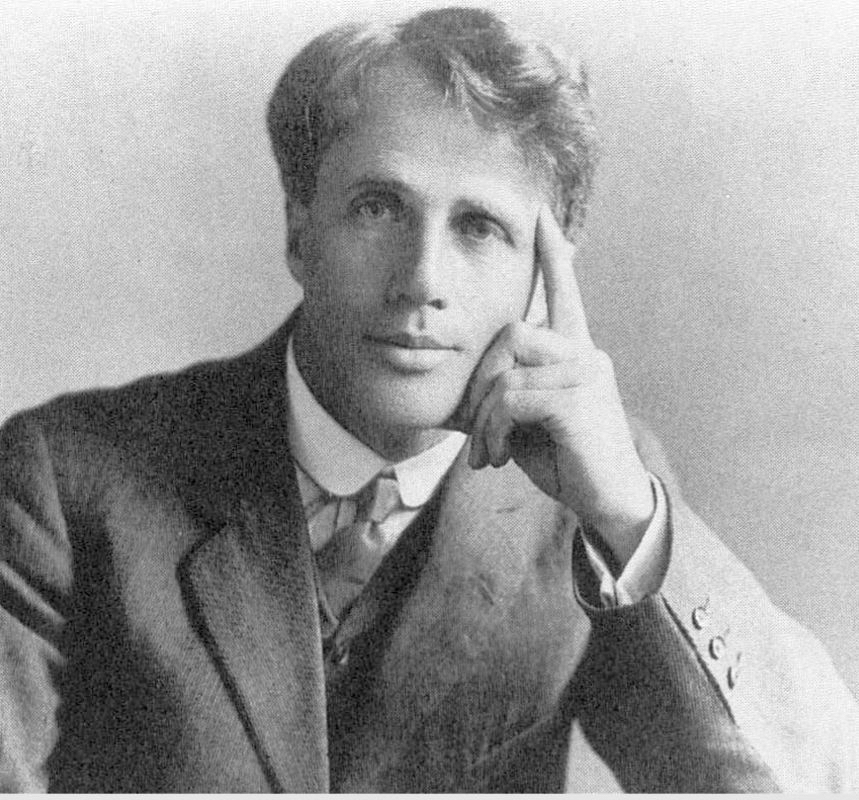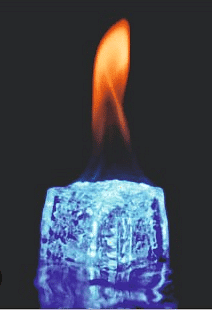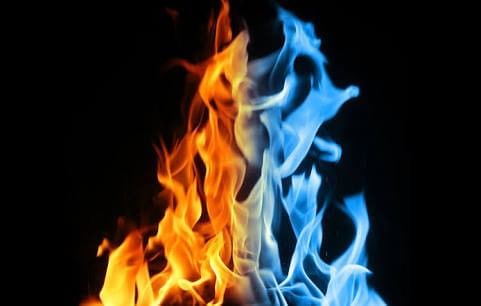Fire & Ice Summary Class 10 English First Flight Chapter 2
| Table of contents |

|
| About the Poet |

|
| Key Points of the Poem |

|
| Detailed Summary |

|
| Literary Devices |

|
| Difficult Words |

|
| Symbolic Meanings |

|
About the Poet
Robert Lee Frost (March 26, 1874 – January 29, 1963) was an American poet. His work was initially published in England before it was published in the United States. Known for his realistic depictions of rural life and his command of American colloquial speech, Frost frequently wrote about settings from rural life in New England in the early 20th century, using them to examine complex social and philosophical themes.

Key Points of the Poem
- The poem has 2 stanzas (first with 4 lines, second with 5 lines) — 9 lines in total.
- It is written symbolically.
- Two opinions about the world’s end, the symbols — ‘Fire’ and ‘Ice’ have been used for human emotions like desire and hatred respectively.
- As fire can spread very fast and cause a great destruction in no time likewise our desires may also prove very destructive if they go out of control.
- Hatred causes slow destruction like ice but it is also very harmful.
Detailed Summary
Stanza 1
Some say the world will end in fire,
Some say in ice.
The poet introduces two opposing beliefs about how the world might end. Some people think it will be destroyed by fire, symbolizing desire, passion, greed, and uncontrolled emotions. Others believe it will end in ice, symbolizing hatred, indifference, and insensitivity. Frost sets up the contrast between these two destructive forces of human nature.
Stanza 2
From what I’ve tasted of desire
I hold with those who favor fire.
The poet reflects on his own experiences with human emotions. He has felt the burning power of desire—for wealth, power, or possessions—and knows how destructive it can be. Based on this understanding, he agrees with those who think fire (desire and greed) could cause the end of the world. Frost shows how desire grows endlessly and burns everything in its path.

Stanza 3
But if it had to perish twice,
I think I know enough of hate
To say that for destruction ice
Is also great
And would suffice.
The poet considers another possibility: if the world had to end a second time, ice (representing hatred and coldness of heart) could also destroy it. Frost has seen how hatred freezes relationships, communities, and humanity itself. Just like fire, ice is equally powerful and dangerous, though it works more slowly and silently. In conclusion, the poet warns us that both desire (fire) and hatred (ice) can bring about destruction, not just of the world but also of human lives and society.
Theme/ Message
Theme
Dual destructive forces – The poem explores how two opposite emotions, desire (fire) and hatred (ice), are equally capable of destroying the world.
- Symbolism: Fire represents desire, passion, and the intensity of human emotions, while ice symbolises hatred, coldness, and emotional detachment.
Human emotions as threats – Fire represents greed, lust, and uncontrolled passion, while ice symbolises hatred, indifference, and insensitivity. These human emotions can lead to catastrophic consequences.

Inevitable destruction – The poet highlights that whether through burning desire or freezing hatred, human flaws can bring about destruction if left unchecked.
Balance and moderation – The underlying theme is that an excess of any strong emotion, whether fiery or cold, leads to ruin.
Message
- The poem teaches that uncontrolled human emotions — whether burning desires or cold hatred — have the power to destroy not just individuals, but the world.
- Ultimately, survival depends not on natural disasters but on how we manage our inner emotions.
Literary Devices
- Rhyme scheme — stanza 1 is abaa while for stanza 2 it is ababa.
Symbolism – Symbolism is the use of symbols to signify some ideas by giving them symbolic meaning different from their literal meaning.
•Fire – symbolizes desire, including human emotions like lust, fury, cruelty, greed etc..
•Ice – symbolizes the hatred with cold feelings of humans such as rigidity, jealousy, indifference, intolerance, etc.. - Imagery —Imagery is the visualisation of the poetic description through our sensory organs. Here, the reader would visualise the destruction through fire or ice. The imagery formed would depend on how we perceive and imagine in the context being portrayed in the poem. It makes a poem picturesque as images are formed in the minds of the reader.
For example, “Some say the world will end in fire” and “To say that for destruction ice, is also great”. - Personification —Personification is to assign human qualities to non-living things. In this poem, ‘fire’ and ‘ice’ are capable of destroying the earth. Therefore, the poet personifies fire and ice by giving them a mind which is capable of destroying almost anything.
- Anaphora — Anaphora is the repetition of a word or expression at the start of two or more consecutive lines.
For example:
“Some say the world will end in fire,
Some say in ice.”
‘Some say’’ is repeated at the start of the lines 1 and 2. - Alliteration —Alliteration is the repetition of the same sound used at the beginning of the nearly placed words.
Example: The sound of ‘s’ in “some say,” ‘f’ in “favour fire,” and ‘w’ in “world will." - Assonance – Assonance is the repetition of the same vowel sounds in different words in the same line e.g., ‘‘I hold with those who favour fire.’’ In this line, the long sound of ‘O’ is used.
- Enjambment—It is a line or clause that does not come to an end at a line break, rather it moves over to the next line. This device has been used prominently in the poem.
For Example:
‘‘From what I’ve tasted of desire
I hold with those who favour fire’’ - Metaphor – It is a literary device that is used to make a covert comparison without using the words ’like ‘or ’as ‘.
Here, the poet has used the terms ‘fire’ and ‘ice’ as metaphors for the human emotions related to desire and hatred. - Antithesis – Fire is the antithesis of ice. Two contrasting and directly opposite destructive forces are the hallmark of this poem: ‘Fire’ and ‘Ice’.
Difficult Words
Perish – to die or be destroyed completely.
Desire – a strong feeling of wanting something; greed or passion.
Favor – to support or agree with an idea.
Suffice – to be enough or adequate.
Destruction – the act of causing great damage or ruin.
Symbolic Meanings
Fire – symbolises desire, greed, passion, lust, uncontrolled emotions.
Ice – symbolises hatred, indifference, coldness of heart, insensitivity.
|
61 videos|620 docs|69 tests
|
FAQs on Fire & Ice Summary Class 10 English First Flight Chapter 2
| 1. What is the central theme of the poem "Fire and Ice"? |  |
| 2. Who is the poet of the poem "Fire and Ice"? |  |
| 3. What do fire and ice symbolize in the poem? |  |
| 4. How does Robert Frost use literary devices in "Fire and Ice" to convey its message? |  |
| 5. What is the significance of the title "Fire and Ice" in relation to the poem's message? |  |
















